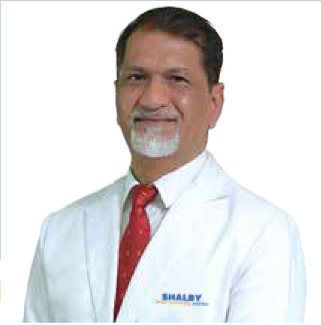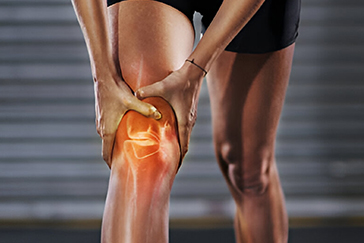 Book Appt.
Book Appt.
 Call Now
Call Now


The procedure ranks second in the list of most common joint replacement procedures. It is highly effective in relieving hip pain and discomfort linked with degenerative joint problems. The success rate of the procedure is significantly high, lying between 90 and 95 per cent post 10 years following the surgery. Depending upon the components of the hip joint that are to be replaced with the prosthetic joint, hip replacement is broadly classified as partial and total hip replacement.
What is a hip replacement?
Hip replacement, also known as hip arthroplasty, is a procedure that aims at helping patients with chronic hip pain, which is not responding to medication, therapy or any other non-invasive treatment. During the procedure, the doctors replace damaged or diseased hip joint components with prosthetic components.
What are the different types of hip replacement?
Hip replacement is broadly classified into two different types:
â— Total hip replacement, which involves the replacement of both the components of the hip joint, i.e. the ball and the socket
â— Partial hip replacement, which involves replacement of the femoral head, while the socket is left intact
â— Hip resurfacing, which involves removal of the damaged joint surface and replacing it with a metallic cover
Who is recommended to go for a hip replacement?
Hip replacement surgery is recommended for patients experiencing any of the following:
â— Chronic hip pain that interferes with the patient’s quality of life
â— Severe hip pain that disrupts your sleep
â— Swelling and stiffness that limits hip joint mobility
â— Inability to perform normal day-to-day activities
â— Pain that is not responding to medicine and therapy
What happens before the procedure?
â— A series of tests will be performed for a thorough examination and evaluation
â— Your medical history will be thoroughly assessed to ensure you do not have any condition that can interfere with the course of surgery.
â— Your doctors will brief you about the medical procedure, along with various benefits and risks involved
â— It is important to inform your doctor if you are pregnant or suspect pregnancy
â— You will need to refrain from consuming anything, starting at least 8 hours prior to the surgery
â— Some patients may be given mild sedatives, to help them relax prior to the procedure
â— You will need to arrange for someone to accompany you to the hospital
â— You will have to make certain arrangements at home to make it easier for you post-discharge.
What happens during the procedure?
â— The surgery is carried out while the patient is sedated. This is done to ensure that you do not feel any pain or discomfort
â— An intravenous line will be connected to your arm to administer nutritional fluids and medication.
â— Your vitals, i.e. heart rate, blood pressure, oxygen levels, etc, will be keenly monitored
â— Once you are under the influence of anaesthesia, the surgical site will be cleaned and doctors will carefully make an incision to access the affected joint components.
â— The affected parts of the hip joint are carefully removed and replaced with the prosthetic components
â— The incision is then closed and a drain may be placed to allow excess fluids to come out
What to expect after the procedure?
â— After the procedure, you are likely to experience mild pain and discomfort. Your doctors will prescribe pain medication to help you deal with the same.
â— Rigorous physical activities are to be avoided as these can put unnecessary strain on the hip
â— You will need to go for physiotherapy to help in quick recovery
â— You will also have to go for regular check-ups to help your doctors keep a track of your progress
SHALBY Sanar International Hospitals provides extensive medical procedures backed up with our state-of-the-art technology and a team of highly qualified & experienced clinical experts.



Life Transformed: Mr. Blojah Felix Journey to Pain-Free Living | SHALBY Sanar

Pain-Free Living After 6 Years: Knee Replacement Success Story | Dr. Rohit Lamba

Bilateral Total Knee Replacement by Dr. Vikram Shah | SHALBY Sanar International Hospitals

Remarkable Recovery Story: Hip Replacement for Non-union Fracture

Incredible Recovery Story: Bilateral Knee Replacement Transformation

Knee Replacement Surgery by Dr. Rohit Lamba: 60-Year-Old's Remarkable Recovery

Renewed Hope: Successful Hip Replacement Surgery Transforms Iraqi Patient's Life

Exploring a Case of Revision Knee Replacement: Insights from Dr. Rohit Lamba

Triumphant Journey: Ms. Fatima, 69, Triumphs Over Revision Knee Replacement Surgery

Leaving the crutches behind – Riyaz, 43, gains confidence after a successful Hip Replacement Surgery

Transformative Total Knee Replacement Surgery: A New Lease on Life for 48-Year-Old Ramesh

Miraculous Recovery: 17-Year-Old Kenyan Overcomes Osteosarcoma with Mega Prosthesis Surgery

Mr. Omar Faruk's Remarkable Knee Recovery: ACL Reconstruction Success Story

Mrs. Vijay Luxmi's Remarkable Knee Replacement Journey

Umidjon, 36, from Uzbekistan shares his gratitude for a successful total hip replacement surgery

Ms. Mohsin from Iraq shares her gratitude for a successful Computer Navigated Total Knee Replacement

A Total Hip Replacement surgery gives Ms. Barry from Ghana, the ability to walk again.

Dr. Rohit Lamba talks about a successful Hip Replacement Surgery carried out on an Iraqi patient
Our doctors pen down their research findings and experiences from time to time. Their words provide deep insight into the latest techniques, technologies and other advancements in healthcare. It provides expert answers to all kinds of health questions for real-life issues.
VIEW ALL.png)
.png)



Since the day of its foundation, SHALBY Sanar International Hospitals is committed to provide comprehensive healthcare services. It regularly organizes awareness programs in its premises and encourages outdoor healthcare activities and camps with an intent to put focus on preventive healthcare.
VIEW ALL